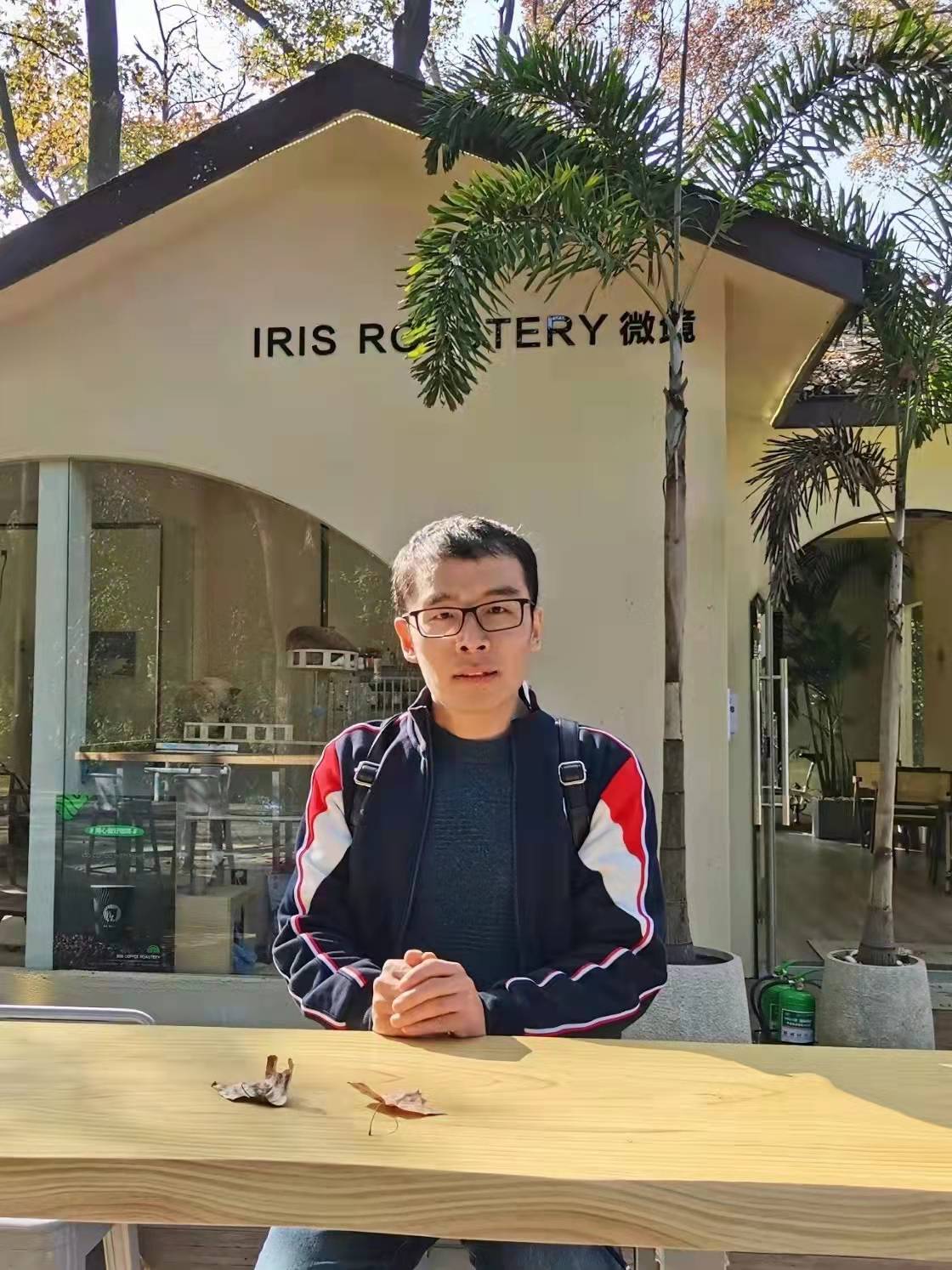
一、基本信息
李士成,男,博士,副研究员,博士生导师。入选2019年度中国地质大学(武汉)地大学者青年拔尖人才。中国自然资源学会(资源与大数据分会委员)、中国地理学会会员。主要研究方向:(1)长时段土地利用/覆被变化及其生态效应,和(2)自然保护地规划与管理相关研究。主持和参与国家自然科学基金青年和面上项目、国家社会科学基金重大项目子课题、国家重点研发计划专题等多个项目。发表国内外期刊论文多篇。获评中科院院长奖,北京市优秀毕业生等。担任SCI检索期刊《Agronomy》编委,土地科学领域主流SSCI期刊《Land》客座主编,以及土地、资源、环境、生态等领域国内外多个学术期刊审稿人。
二、教育经历
博士(2013.9 - 2016.7) 中科院地理资源所 自然地理学专业
硕士(2010.9 - 2013.7) 中科院地理资源所 自然地理学专业
本科(2006.9 - 2010.7) 山东科技大学 水文与水资源工程
三、工作经历
2018.12至 今 云顶4008集团手机登录 副研究员
2016.9-2018.11 云顶4008集团手机登录 助理研究员
四、研究领域
第一,长时段土地利用/覆被重建及其生态环境效应模拟。构建了历史耕地和森林空间重建模型,并采用该模型研制了青藏高原历史耕地和森林空间分布数据集,揭示了青藏高原过去300年耕地、森林变化的基本规律,为气候与生态效应模拟研究提供了重要基础数据。以该成果为基础,获批国家自然科学基金青年项目《过去300年青藏地区土地覆被变化重建》(批准号:41701228)。 以上述数据集为基准,从土地利用面积和空间格局两个维度评价了欧美学者重建的代表性全球历史土地利用数据集HYDE、KK10等在青藏高原地区的不确定性,并提出了全球数据集后续完善的建议和措施。本成果以第一和通讯作者发表在《中国科学:地球科学》、《地理学报》、《地理科学进展》、《Global and Planetary Change》、《Regional Environmental Change》、《Science of the Total Environment》、《Journal of Geographical Sciences》等期刊。
第二,自然保护地评价与优化。定量研制了青藏高原人类活动强度时空数据集,并应用该数据集从人类活动强度的角度评估了自然保护区空间布局的合理性和管护成效,并进一步结合生态系统服务和生物多样性,提出了青藏高原自然保护地空间布局的优化建议。基于该成果,获批国家自然科学基金面上项目《基于人类足迹的中国国家级自然保护区保护成效评估》(批准号:41971245)。本成果以第一和通讯作者发表在《生态学报》、《Ecosystem Services》、《Science of the Total Environment》、《Land》等期刊。
第三,生态保护与经济发展的协同研究。基于InVEST模型和价值估测方法测度并分析了长江三峡库区1970s末-2015年土壤保持服务的时空变化特征,并探究了其与经济增长的关系。发现长江三峡库区实现了生态和经济的“双赢”。这种“双赢”发展模式值得进一步探究,或许可以推广至其他区域。本成果以第一作者发表在《Land Degradation & Development》和《Remote Sensing》。
五、项目情况
(1)国家自然科学基金青年基金(批准号: 41701228):《过去300年青藏地区土地覆被变化重建》, 2018.1~2020.12,主持。
(2)国家自然科学基金面上基金(批准号: 41971245):《基于人类足迹的中国国家级自然保护区保护成效评估,2020.1~2023.12,核心骨干。
(3)国家重点研发计划协作项目:《北半球千年尺度气候高分辨率数据集研制及可靠性研究》样品收集分析和文献资料整编,2017.07~2022.06,主持。
(4)国家社会科学重大项目协作项目——财政部文化产业支持项目:《服务于丝调之路历史地理信息开放平台的土地利用/覆被数据集研制》,2016~2021,主持。
(5)中央高校基本业务科研费-青年教师提升计划项目:《长江经济带1990-2015年人类活动强度评估》,2017.1~2019.12,主持。
六、代表性学术论文
2022年
Li SC*, Su S, Liu Y, et al. 2022. Effectiveness of the Qilian Mountain Nature Reserve of China in Reducing Human Impacts. Land, 11: 1071.https://doi.org/10.3390/land11071071(SSCI)
Liu X,Li SC*, He FN, et al. 2022. Reconstruction of cropland areas for South Asia from AD 640 to 2016. Regional Environmental Change, 22: 47.https://doi.org/10.1007/s10113-022-01911-5(SSCI/SCI)
Gao D,Li SC*. 2022. Spatiotemporal impact of railway network in the Qinghai-Tibet Plateau on accessibility and economic linkages during 1984–2030. Journal of Transport Geography, 100: 103332.https://doi.org/10.1016/j.jtrangeo.2022.103332(SSCI)
Hua L,Li SC*, Gao D, et al. 2022. Uncertainties of Global Historical Land Use Datasets in Pasture Reconstruction for the Tibetan Plateau. Remote Sensing, 14.https://doi.org/10.3390/rs14153777(SCI)
Tan LY, Guo GC,Li SC*. 2022. The Sanjiangyuan Nature Reserve Is Partially Effective in Mitigating Human Pressures. Land, 11, 43.https://doi.org/10.3390/land11010043(通讯作者. SSCI)
Tan LY; Li SC; Guo GC (2022): Human Footprint dataset for Sanjiangyuan Area of China. PANGAEA,https://doi.org/10.1594/PANGAEA.946838(数据集)
2021年
Li SC, Liu Xin, Paudel Basanta, et al. 2021. Stable sediment retention and rapid economic growth occurred together from the end of the 1970s to 2015 in the Three Gorges Reservoir area. Land Degradation & Development, 32(13): 3653-3665.https://onlinelibrary.wiley.com/doi/10.1002/ldr.3818 (SCI)
2020年
Li SC, Zhang H, Zhou XW, et al. 2020. Enhancing protected areas for biodiversity and ecosystem services in the Qinghai–Tibet Plateau. Ecosystem Services, 43: 101090.https://doi.org/10.1016/j.ecoser.2020.101090 (SSCI/SCI)
2019年
Li SC, He FN, Zhang XZ et al., 2019. Evaluation of global historical land use scenarios based on regional datasets on the Qinghai–Tibet Area.Science of the Total Environment, 657: 1615-1628.https://doi.org/10.1016/j.scitotenv.2018.12.136 (SCI)
Li SC, Bing ZL, Jin G. 2019. Spatially Explicit Mapping of Soil Conservation Service in Monetary Units Due to Land Use/Cover Change for the Three Gorges Reservoir Area, China.Remote Sensing, 11(4), 468.https://doi.org/10.3390/rs11040468 (SCI. ESI高被引论文)
何凡能,李士成*,杨帆等. 2019.全球历史土地利用数据集中国草地数据可靠性评估.中国科学:地球科学, 49(2): 421-433.
2018年
Li SC, Wu JS, Gong J, et al. 2018. Human footprint in Tibet: Assessing the spatial layout and effectiveness of nature reserves.Science of the Total Environment. 621, 18-29.https://doi.org/10.1016/j.scitotenv.2017.11.216 (SCI)
Li SC, Zhang YL, Wang ZF, et al. 2018. Mapping human influence intensity in the Tibetan Plateau for conservation of ecological service functions.Ecosystem Services. 30: 276-286.https://doi.org/10.1016/j.ecoser.2017.10.003 (SSCI/SCI)
Li SC, Gong J, Deng QH et al., 2018. Impacts of the Qinghai–Tibet Railway on Accessibility and Economic Linkage of the Third Pole.Sustainability, 10(11).https://doi.org/10.3390/su10113982 (SSCI/SCI)
He FN,Li SC*, Yang F et al., 2018. Evaluating the accuracy of Chinese pasture data in global historical land use datasets.Science China Earth Sciences, 61(11): 1685-1696.https://link.springer.com/article/10.1007/s11430-018-9256-1 (SCI)
Li SC, Zhang XZ, 2018. Land use-based human activity intensity along the Yangtze River Economic Belt, China (1970s – 2015).China Scientific Data, 3(3).http://www.csdata.org/p/192/. (数据集和数据论文)
李士成,李少伟,希娜·吉,等, 2018.西藏自然保护区现状分析及其空间布局评估.生态学报, 38(7): 509. (http://www.ecologica.cn/stxb/ch/html/2018/7/stxb201704160677.htm)
2017年及以前
Li SC, Wang ZF, Zhang YL. 2017. Crop cover reconstruction and its effects on sediment retention in the Tibetan Plateau for 1900–2000.Journal of Geographical Sciences, 27(7): 786-800.https://link.springer.com/article/10.1007/s11442-017-1406-4/ (SCI).
Li SC, He FN, Zhang XZ. 2016. A spatially explicit reconstruction of cropland cover in China from 1661 to 1996.Regional Environmental Change, 16(2): 417-428.https://link.springer.com/article/10.1007/s10113-014-0751-4(SSCI/SCI. ESI高被引)
He FN,Li SC*, Zhang XZ. 2015. A spatially explicit reconstruction of forest cover in China over 1700-2000.Global and Planetary Change, 131:73-81.https://doi.org/10.1016/j.gloplacha.2015.05.008
He FN, Li MJ,Li SC*, Xiao R. 2015. Comparison of changes in land use and land cover in China and the USA over the past 300 years.Journal of Geographical Sciences, 25(9): 1045-1057.https://link.springer.com/article/10.1007/s11442-015-1218-3
李士成,张镱锂,何凡能. 2015.过去百年青海和西藏耕地空间格局重建及其时空变化.地理科学进展, 34(2): 197-206.
李士成,何凡能,张学珍. 2014.中国历史时期森林空间格局网格化重建方法研究——以东北地区为例.地理学报, 69(3): 312-322.
李士成,何凡能,陈屹松. 2012.清代西南地区耕地空间格局网格化重建.地理科学进展, 31(9): 1196-1203.
七、人才培养
本科生:
Tan LY(优秀本科毕业论文,核心内容发表期刊论文https://doi.org/10.3390/land11010043)
研究生:
2019级:Liu X(优秀毕业生//国奖。论文https://doi.org/10.1007/s10113-022-01911-5)
2020级:Gao D(论文https://doi.org/10.1016/j.jtrangeo.2022.103332)、HuaL(论文https://doi.org/10.3390/rs14153777)
2021级:Luo QX、Deng YF、Yan X
2022级:Xie JQ、Liu YT、Li JR、Cheng HN
八、联系方式
Email: lisc@cug.edu.cn (lisc.10s@igsnrr.ac.cn)
ORCID http://orcid.org/0000-0001-6296-636X
(简历信息于2022年9月13日更新)

